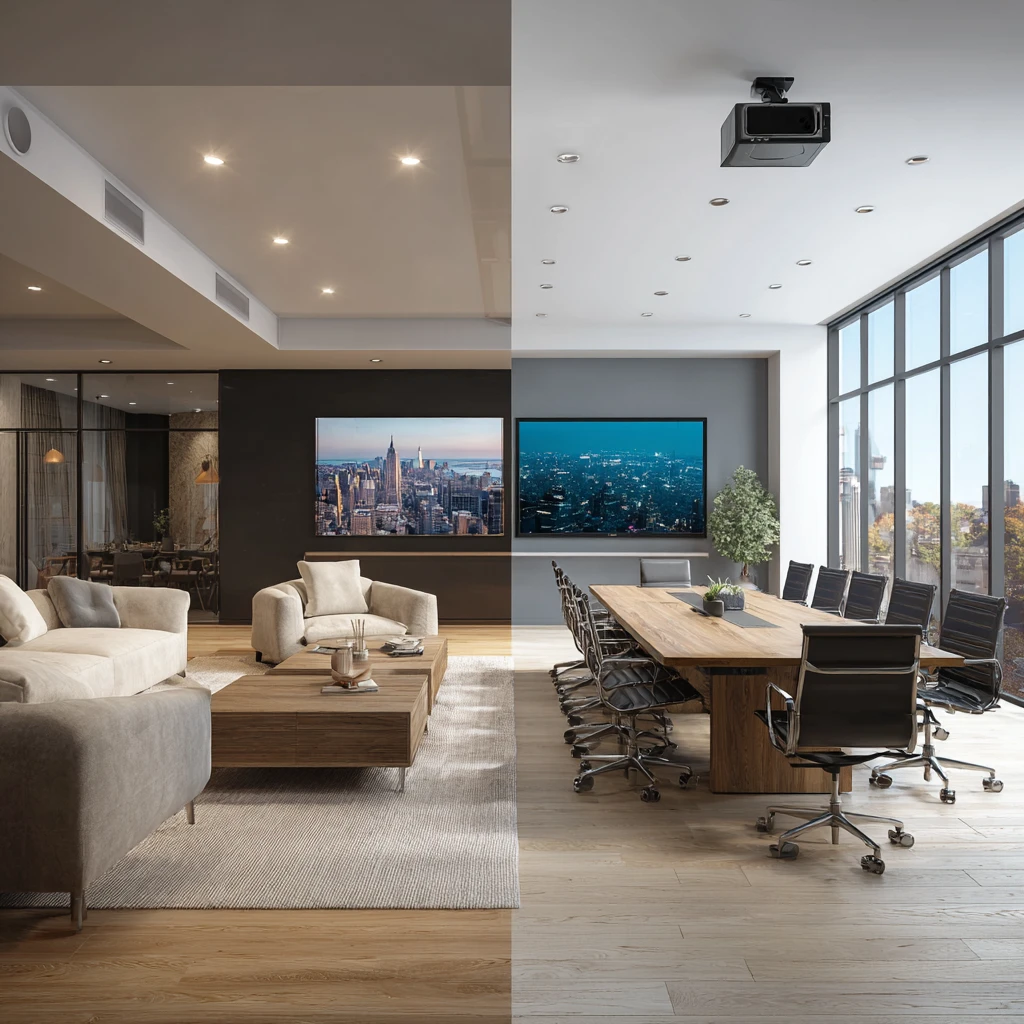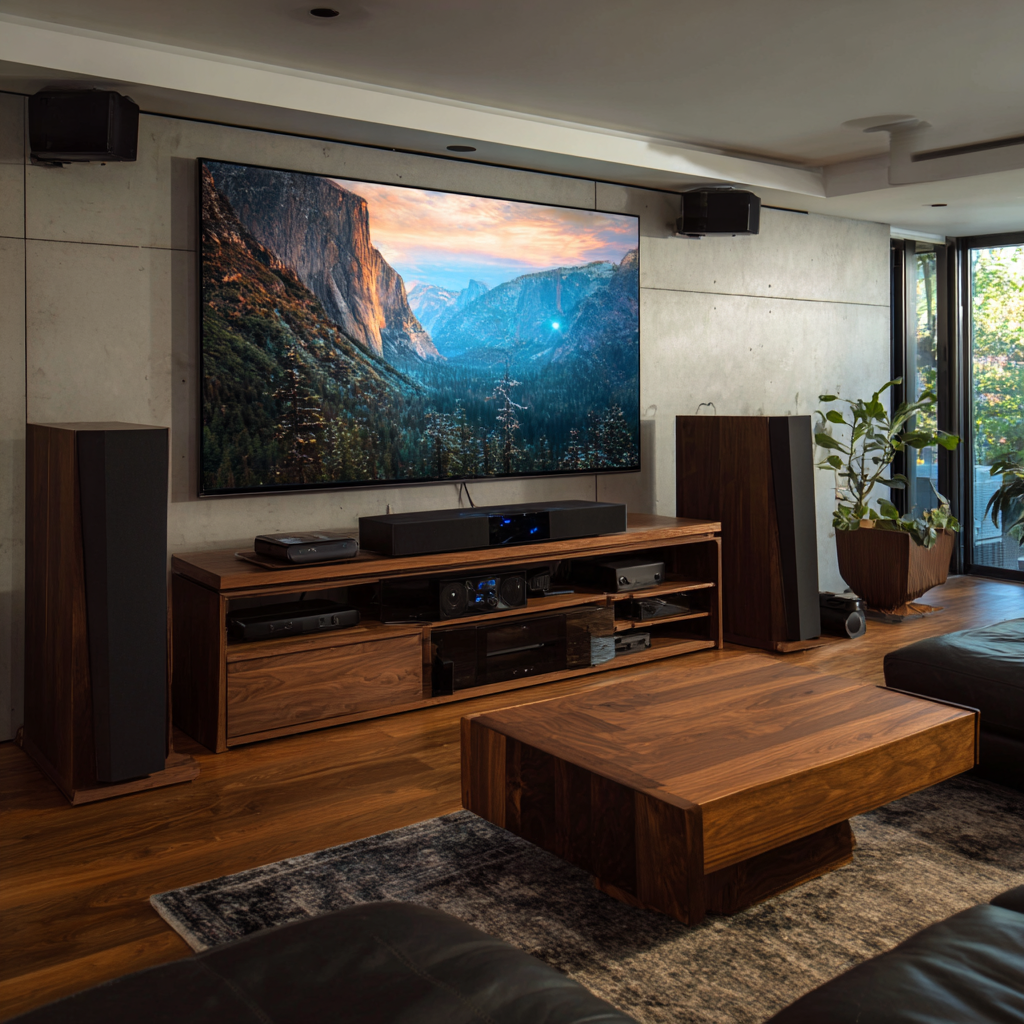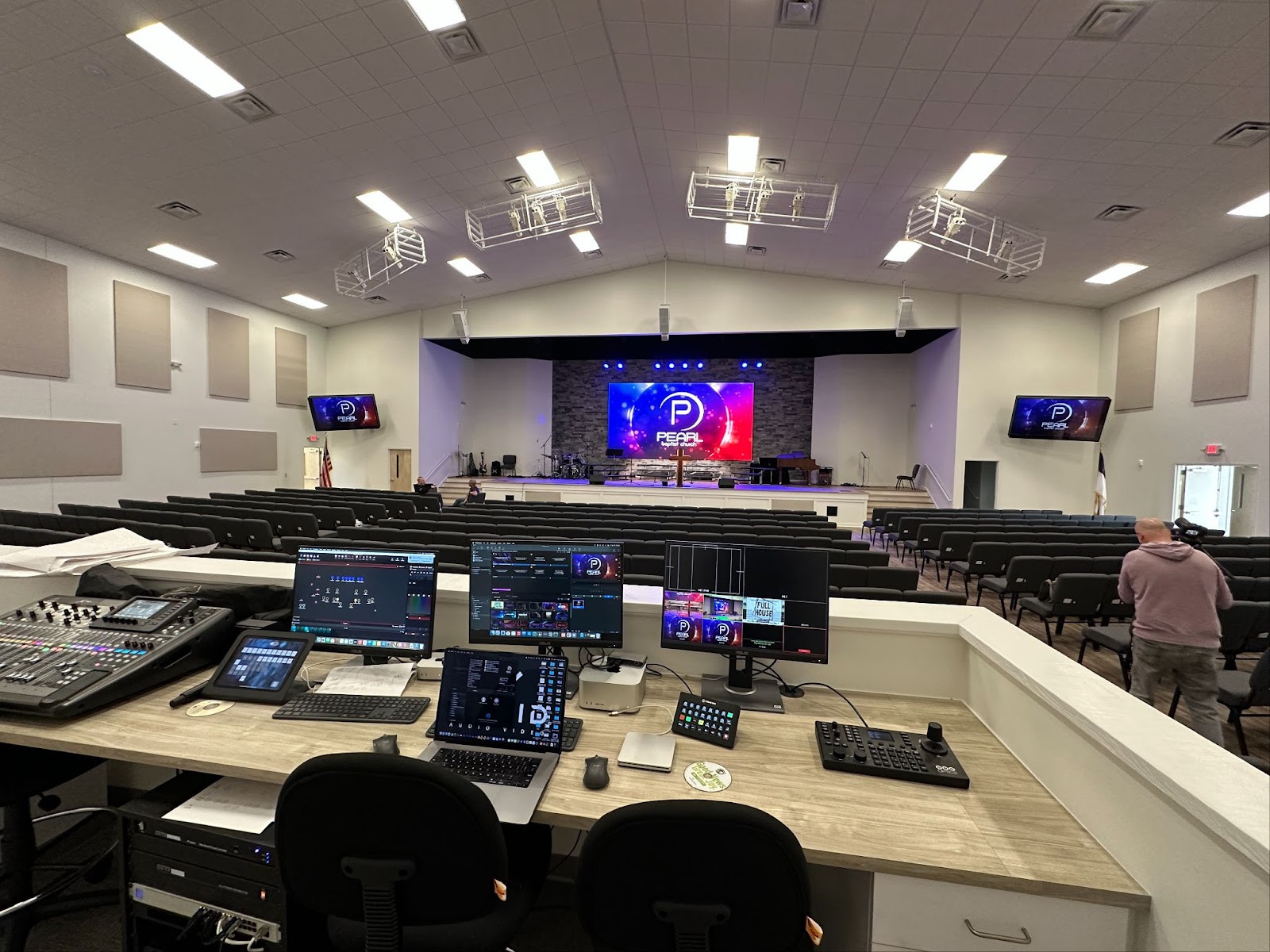
You wouldn't hook a 30,000-pound excavator trailer to a Ford Maverick and expect to make it from Mooresville up to Boone. The truck is fine to make that trip without hauling anything, but pulling that load changes everything. Even if you did get it moving, it would destroy the suspension, transmission, and engine.
The same principle applies to AV equipment. Just because something works in your living room doesn't mean it can handle the demands of a commercial environment.
I get this question a lot: "Why does commercial AV equipment cost so much more?" It's a fair question. You may be familiar with a make and model that has served you well in your personal life, and you were expecting something similar. So when we recommend something different for your office or church, it makes sense to wonder why.
The answer isn't about markup or profit margins. It's about engineering equipment for completely different jobs.
So what makes them different?

The Real Differences That Matter
Built for Different Jobs
That Samsung TV that's been perfect in your living room is designed for home use. It’s designed to run two to four hours a day. The display in your conference room needs to run 8-12 hours daily, five days a week. Even if your home TV runs constantly, that's still just your family in a non-mission-critical, l controlled environment.
Commercial spaces add layers of complexity that home equipment simply wasn't designed to handle.
Understanding what makes a commercial AV system work starts with recognizing that usage patterns drive design requirements. Your home setup works perfectly because it's tailored to your needs. Commercial spaces have completely different demands.
When residential equipment is pushed beyond its design limits, you'll see image quality degrade, colors shift, and components fail prematurely. That "great deal" becomes expensive when you're replacing it every 18 months.
Usage and Performance Requirements
Displays: Your home TV automatically shuts off or dims after a few hours - it's protecting itself from overuse. Commercial displays are built to handle constant use without the picture quality degrading or colors shifting over time.
Audio: That receiver in your home theater works great for your living room. But it simply doesn't have the power reserves needed for larger spaces or the types of connections that professional installations require. Push it beyond its design, and you'll end up with distorted sound or blown components.
Networking: Your home router handles your family's devices just fine. But in a conference room environment with multiple laptops, tablets, presentation systems, and control interfaces all competing for bandwidth, you need equipment designed for that traffic load and complexity.
I saw this firsthand when a client tried to use a consumer wireless system for their conference room. It worked fine for the first few months, but as they started having larger meetings with more devices, the system couldn't keep up. Presentations started dropping out mid-meeting, and video calls became unreliable. We replaced it with commercial-grade networking equipment, and the problems disappeared.

System Integration and Control
Commercial AV equipment is designed to work as part of a larger system where every component communicates reliably with every other component. Your home equipment is designed to work as individual pieces that you connect directly.
Commercial systems also need sophisticated monitoring and control capabilities. Facilities managers need to know if something's not working properly, adjust settings remotely, and ensure security protocols are maintained - features that home equipment simply doesn't provide.
Getting consumer-grade components to work together seamlessly in a complex installation isn’t feasible. They weren’t built to do that.
Getting It Right From the Start
Think about the water pipes in your house versus the mains that supply your neighborhood. Both carry water, but they're designed for entirely different pressure loads and flow requirements. You can't connect a garden hose to a fire hydrant and expect it to work – the pressure will blow it apart.
Commercial AV equipment is built for the high-pressure demands of business environments: constant use, multiple users, integration requirements, and reliability expectations that consumer equipment simply can't meet.
At RYGID AV, we've seen what happens when the wrong equipment gets pushed beyond its limits. We've also seen how the right commercial-grade systems keep performing reliably for years.
Every installation is different. The key is matching the equipment to the actual demands it will face, not just the immediate budget constraints. We help clients with this all the time, and we’re ready to help you choose the right equipment so you can avoid the frustration and expense of replacing the wrong gear later.
Need help choosing the right AV equipment for your space?
Contact RYGID AV for a consultation. We'll walk the journey with you to assess your specific usage requirements and recommend solutions built for your actual demands.
RYGID AV | 122 Backstretch Ln., Mooresville, NC 28117
(980) 263-9194| info@rygidav.com
Where to Contact + Connect with RYGID AV
Mooresville, NC 28117

.webp)